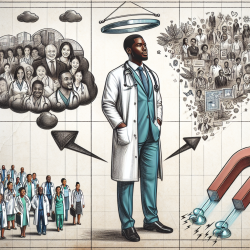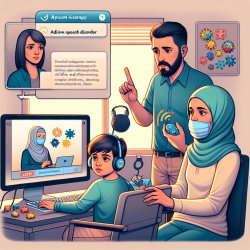In the evolving landscape of special education and therapy, technology plays a pivotal role in delivering effective and engaging interventions. A dive into the research article "Curious George" and other software reviews offers a treasure trove of insights for practitioners aiming to enhance their skills and toolkit through technology. This blog post explores how these technological tools can be leveraged to improve therapy outcomes and encourages further exploration of the resources available.
Embracing Technology in Therapy
The "Curious George" software, designed for teaching basic comparison concepts such as tall/short and big/small, exemplifies the potential of technology to make learning engaging and accessible for young or developmentally delayed children. The program's user-friendly design, complete with clear instructions and the ability to correct input errors easily, demonstrates the importance of technology that caters to the needs of its users. This software, along with others reviewed, highlights several key areas where technology can support therapeutic goals:
- Motivation and Engagement: Programs like "Curious George" use familiar characters and interactive elements to capture children's interest, making therapy sessions more enjoyable and effective.
- Accessibility: Technology can provide alternative ways for children to engage with therapy materials, especially for those with physical or learning disabilities.
- Customization: Software often allows for adjustments to meet individual learner needs, making therapy more personalized and targeted.
- Feedback and Reinforcement: Immediate feedback provided by educational software can reinforce learning and help children understand concepts more quickly.
Challenges and Considerations
While technology offers numerous benefits, it's essential to approach its integration into therapy with careful consideration. The reviews reveal common challenges such as the need for adult assistance with certain programs and the limitations of software that may not fully adapt to every learner's needs. These challenges underscore the importance of selecting the right tools and adapting them to fit the therapeutic context.
Future Directions
The insights from the "Curious George" review and others invite practitioners to explore the vast potential of technology in therapy further. Future directions may include:
- Integrating Online Therapy Services: Companies like TinyEYE are pioneering online therapy services that offer new avenues for delivering therapy, highlighting the importance of exploring online platforms.
- Professional Development: As technology becomes increasingly integral to therapy, ongoing professional development in this area will be crucial for therapists.
- Research and Evaluation: Continued research and evaluation of educational software and technology will be essential in identifying the most effective tools and strategies for different therapeutic needs.
Conclusion
Technology, when thoughtfully integrated into therapy, offers significant opportunities to enhance learning and engagement. The "Curious George" software and other reviewed programs illustrate the potential benefits and challenges of using technology in therapeutic settings. As the field of special education continues to evolve, embracing technology and exploring its possibilities will be key to delivering effective and innovative therapy solutions. For practitioners looking to expand their technological toolkit, delving into the resources reviewed here is an excellent starting point.
To read the original research paper, please follow this link: Curious George.










